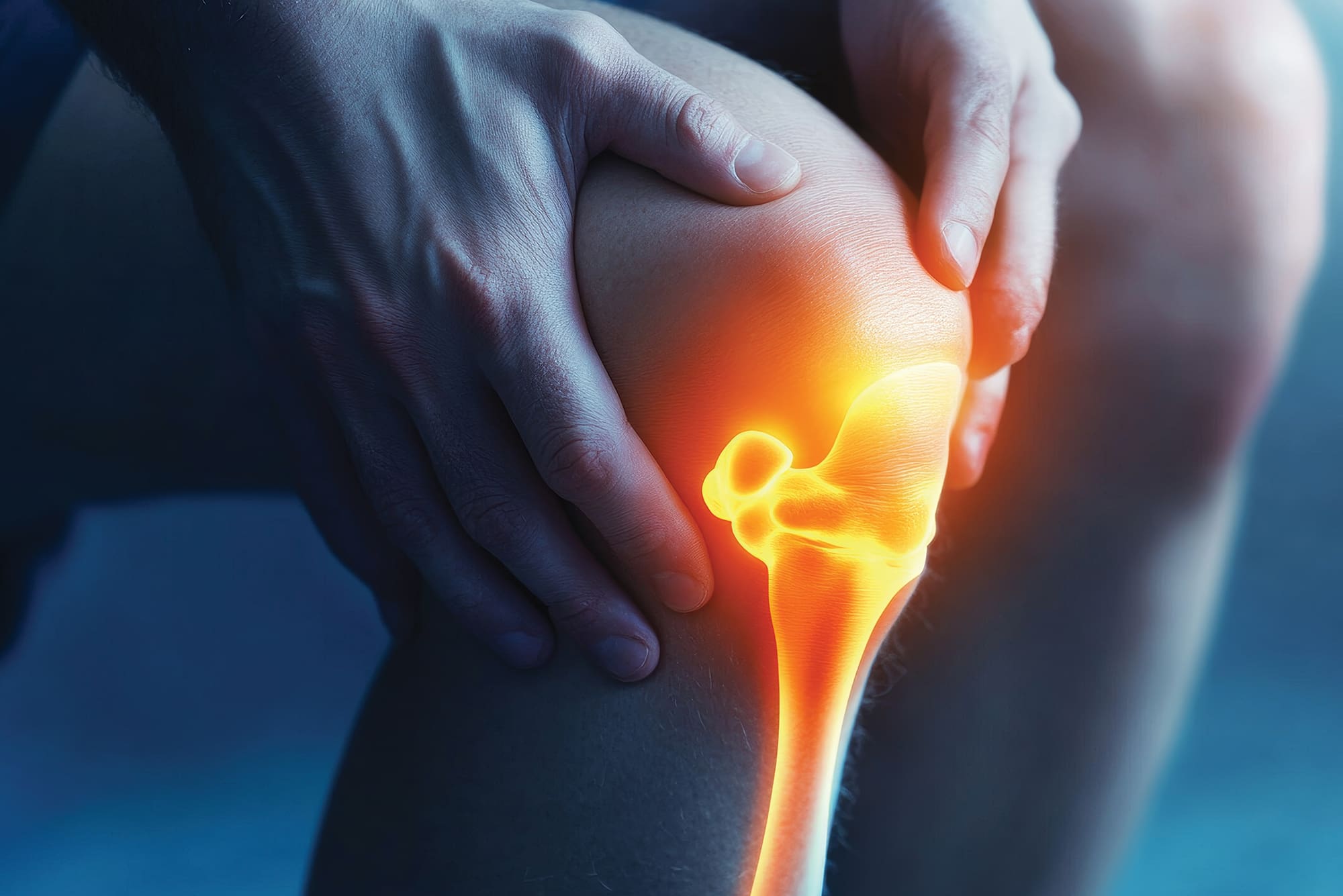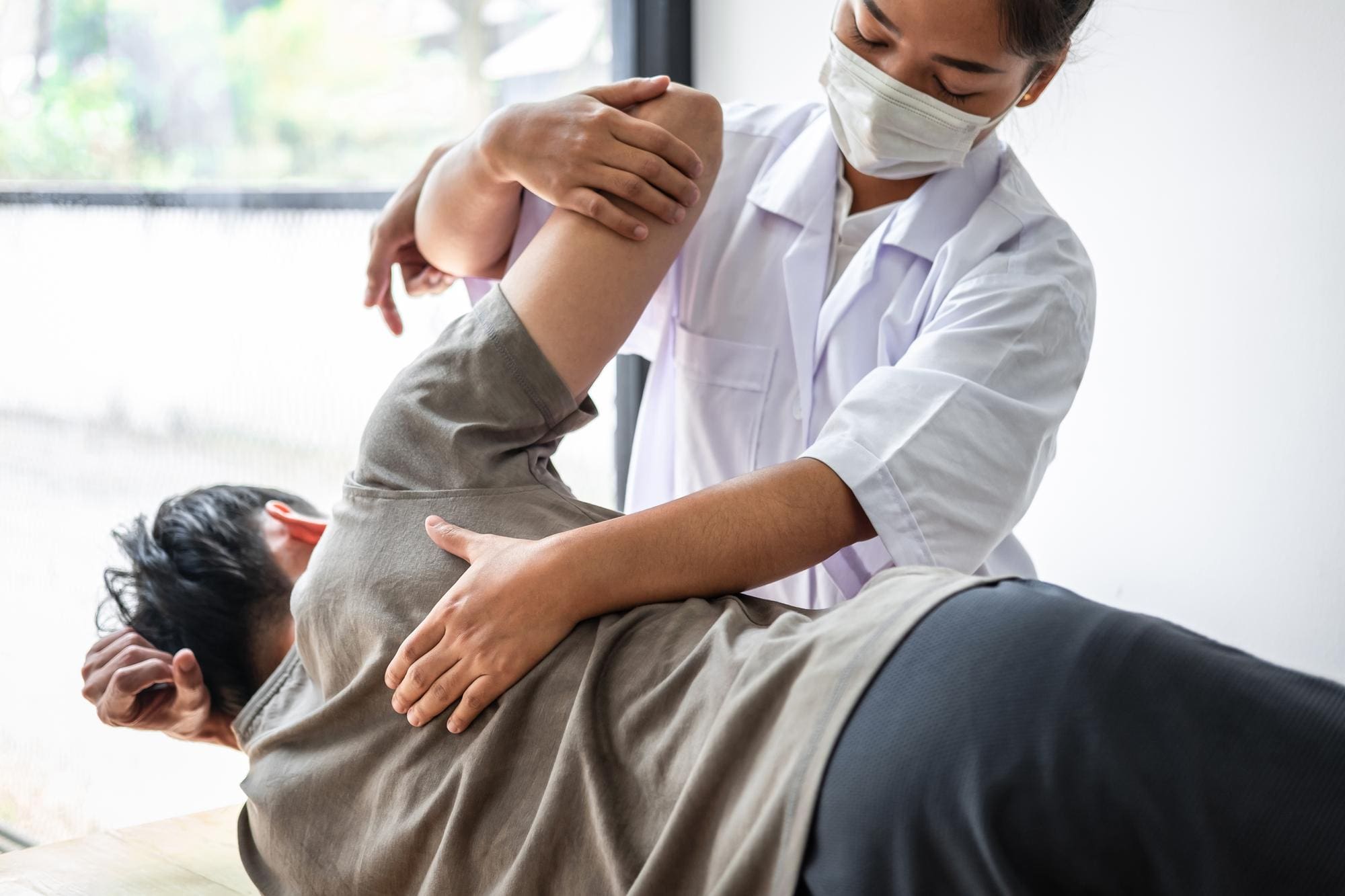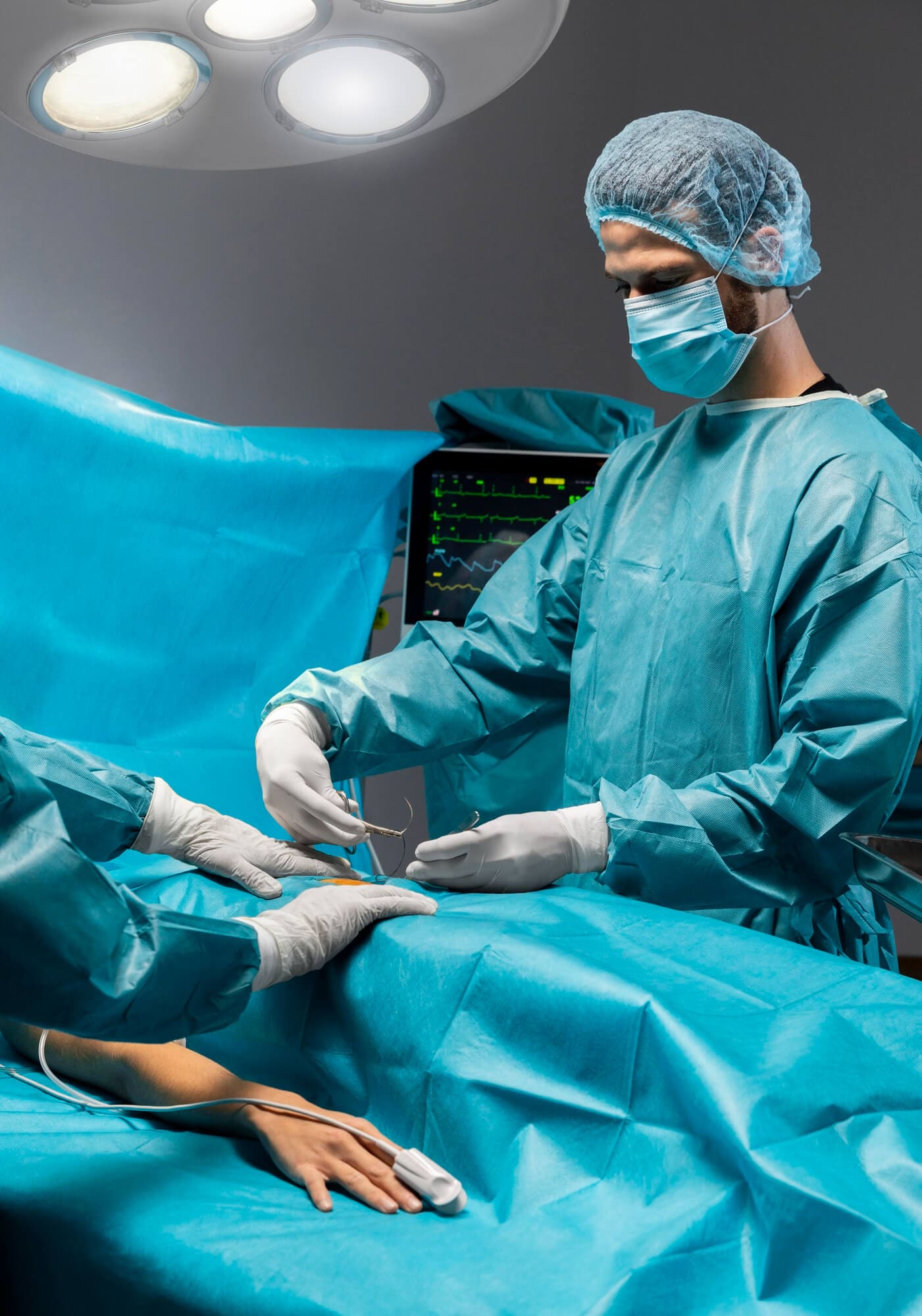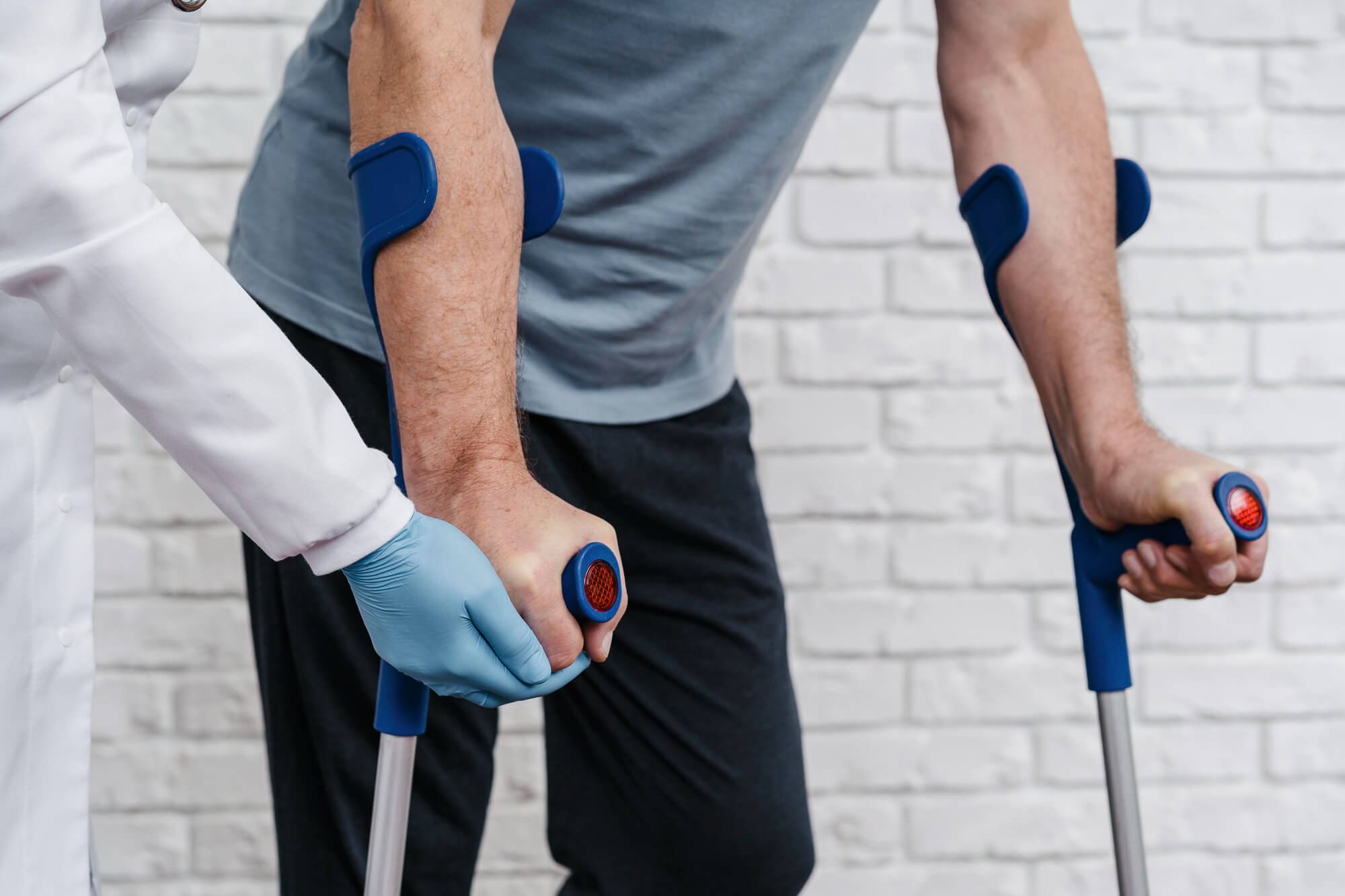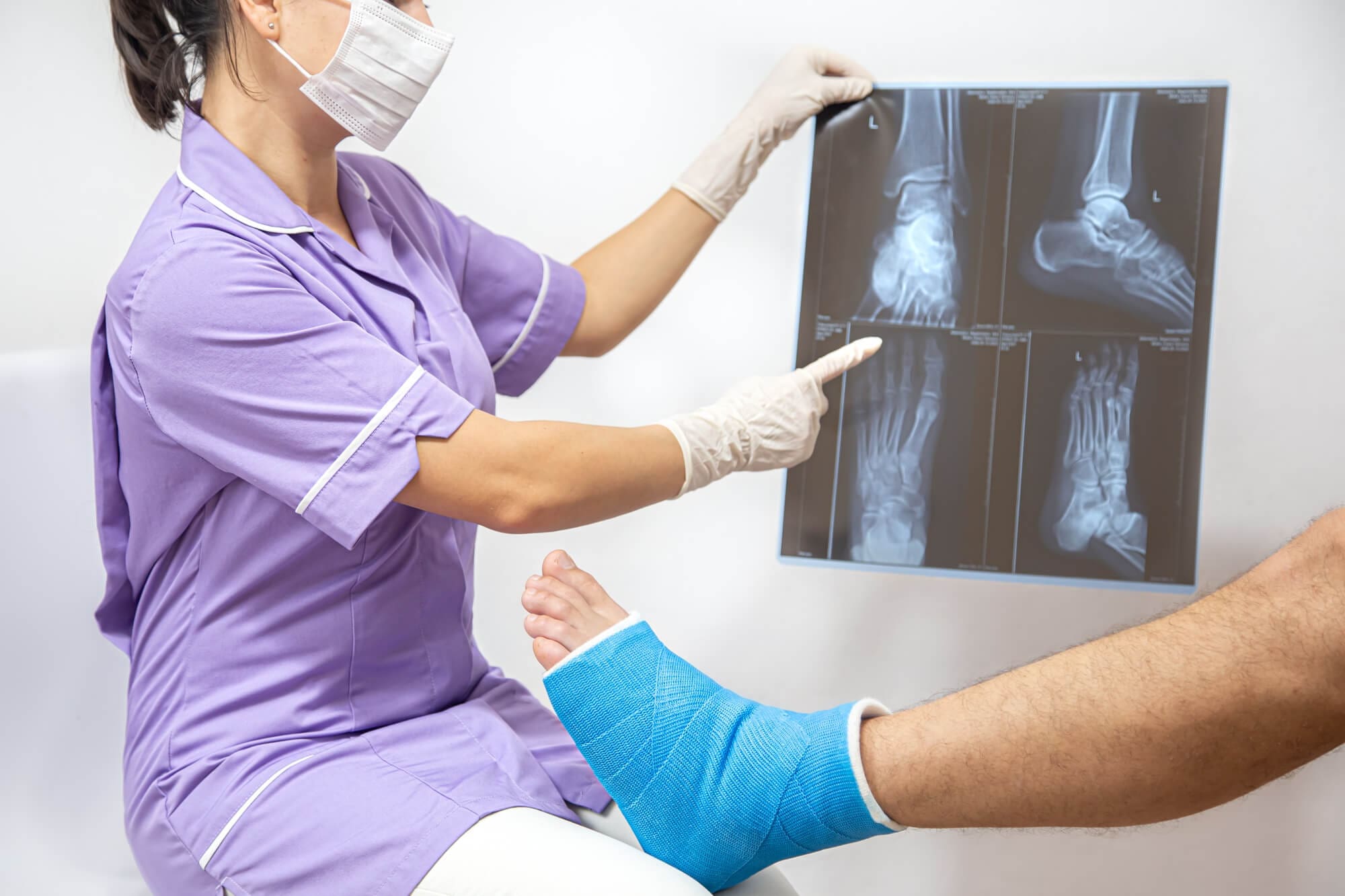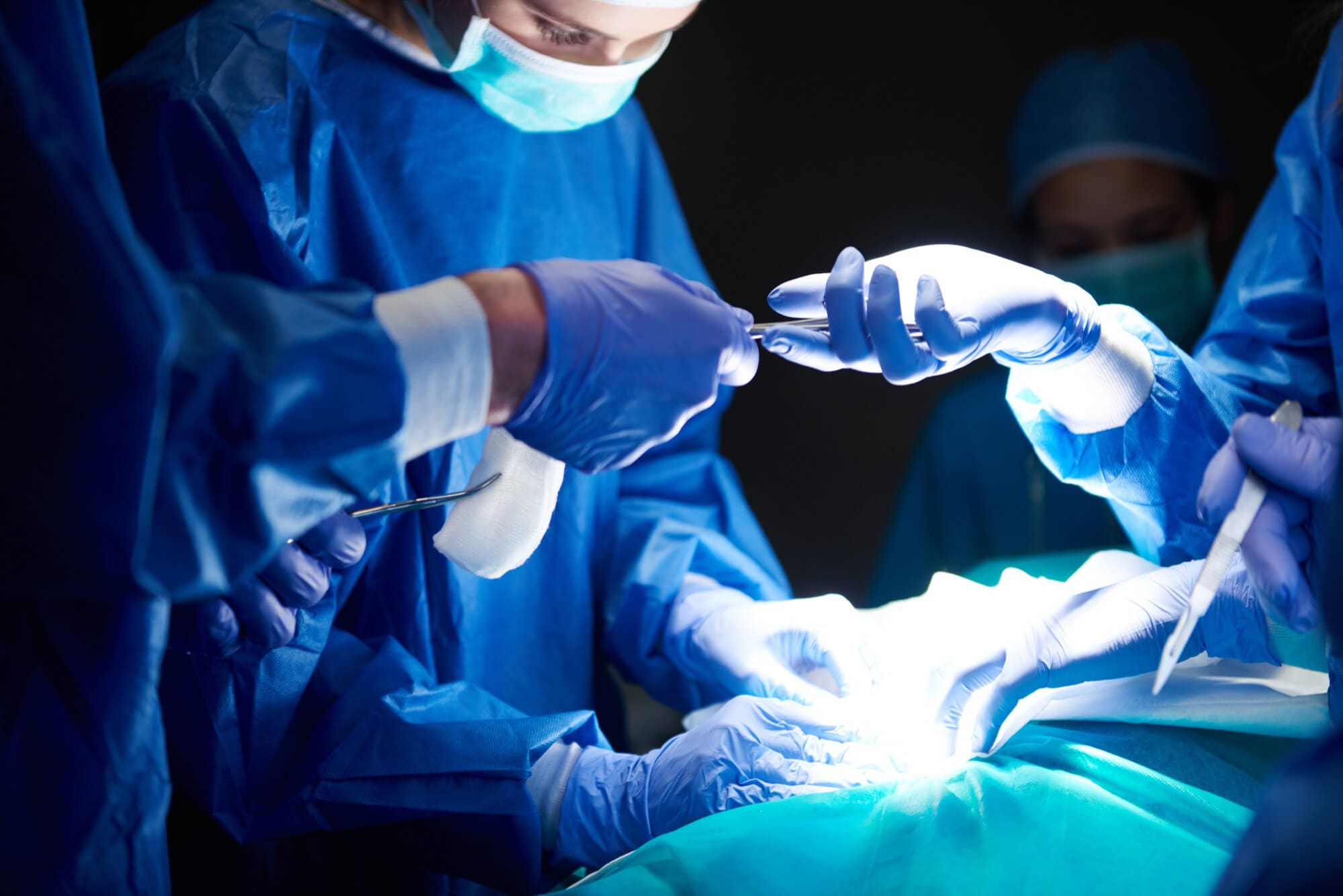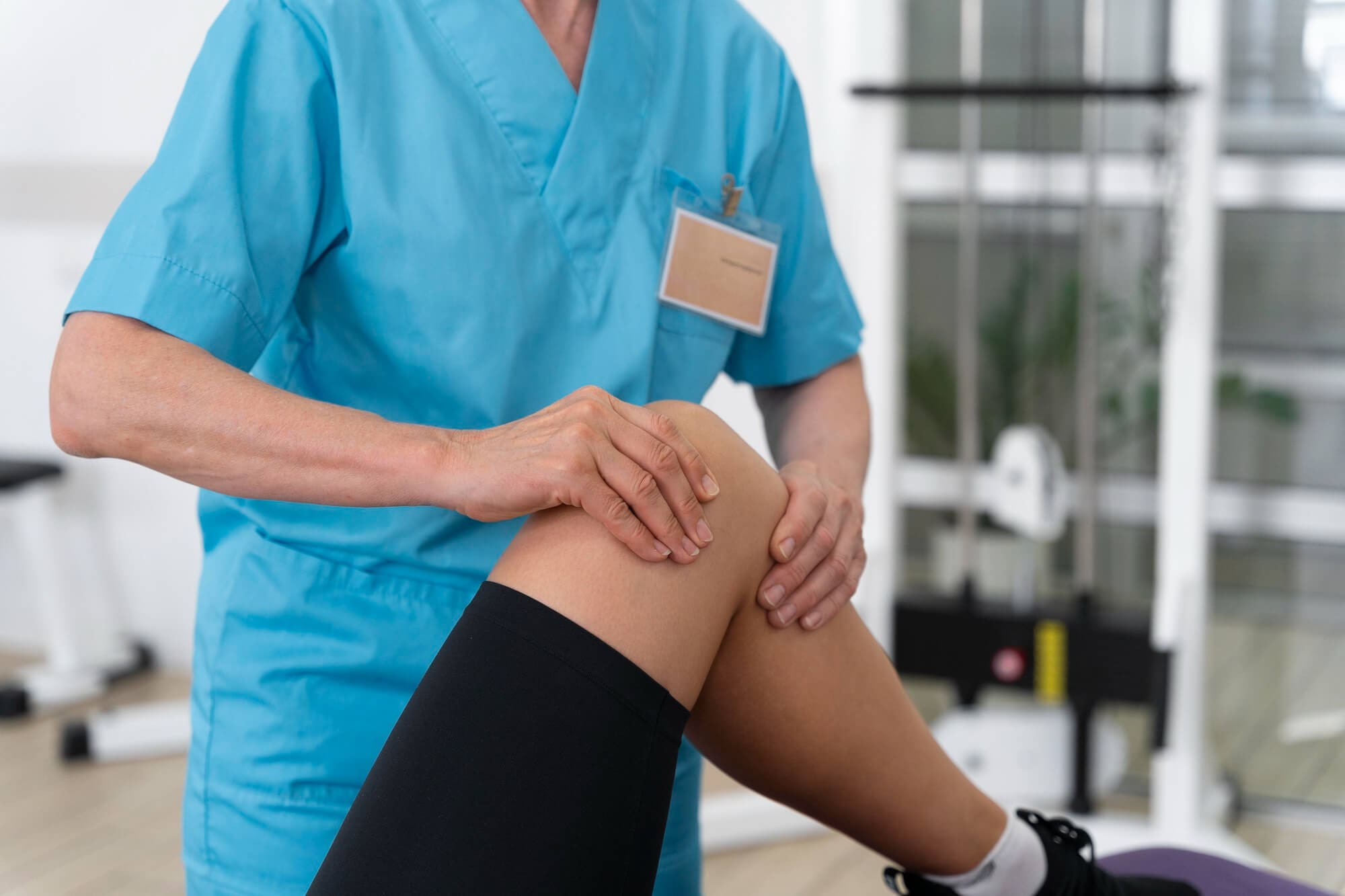
Knee pain can make everyday activities difficult, from walking to climbing stairs. If nonsurgical treatments like physical therapy and injections are no longer effective, knee replacement surgery may be the best solution.
At Burlingame Orthopedics, we provide advanced knee replacement procedures to restore knee function and help patients return to their normal activities.
Our team performs knee replacement surgery at multiple locations throughout the Peninsula and San Francisco. We offer knee replacement surgery in both hospital settings and ambulatory surgery centers (ASC) for patient convenience. For inquiries, call (650) 692-1475 or request an appointment online.
Understanding Knee Replacement Surgery
Knee replacement surgery, or knee arthroplasty, is a surgical procedure that removes old or damaged parts of the knee joint and replaces them with artificial metal and plastic parts to relieve pain and restore movement.

The knee consists of bones, ligaments, muscles, cartilage, and tendons. This surgery can improve knee function and reduce pain.
There are two types of knee replacement surgeries:
- Total knee replacement: Replaces all of the knee joint.
- Partial knee replacement: Replaces only the damaged portion of the knee while preserving more of the soft tissues and posterior cruciate ligament.
The 3 Most Common Types of Knee Arthritis
Knee arthritis is a leading cause of knee pain and joint damage, often necessitating joint replacement surgeries. The three most common types include:
- Osteoarthritis (OA): The most prevalent type, osteoarthritis is a degenerative condition caused by wear and tear of the cartilage in the knee joint. It leads to pain, stiffness, and reduced range of motion over time.
- Rheumatoid Arthritis (RA): An autoimmune disease where the immune system mistakenly attacks the soft tissues lining the knee joint, causing inflammation, pain, and joint deformity.
- Post-Traumatic Arthritis: This type develops after a knee injury, such as a fracture, ligament tear, or meniscus damage. Over time, the injured joint may wear down, leading to chronic pain and stiffness.
When arthritis progresses to the point where it significantly impacts daily life, knee replacement surgery may be the best solution.
Who Is a Candidate for Knee Replacement Surgery?
Candidates for knee replacement surgery experience knee pain due to sports injuries, age-related wear, overuse, or arthritic tissue deterioration.
To determine the best treatment, the Burlingame Orthopedics team will:
- Examine your knee joint
- Review your symptoms and medical history
- Assess knee stability, range of motion, and muscle strength
- Perform in-office X-rays and/or advanced imaging (MRI, CT scan)
Your treatment plan will depend on your activity level, weight, age, knee shape and size, and overall health. Burlingame Orthopedics also offers knee arthroscopy and other surgical procedures.
What to Expect During Surgery
Before knee replacement surgery, you will receive either regional or general anesthesia to ensure comfort.
Regional anesthesia numbs the lower body while keeping you awake, whereas general anesthesia puts you completely to sleep. Your surgeon may also administer a nerve block to help control post-surgical pain.
The procedure typically takes 1-2 hours and includes the following steps:
- Pre-Surgical Evaluation
Your surgeon will perform a final physical examination and review blood tests to check for any conditions that could affect surgery, such as anemia, infections, or blood clot risks. - Removal of Damaged Tissue
The surgeon carefully removes worn-out cartilage and damaged bone from the knee joint, creating a stable surface for the implant. - Implant Placement and Alignment
The surgeon inserts knee replacement implants, ensuring proper alignment of the thigh bone (femur), shin bone (tibia), and patellar component (kneecap replacement if necessary). Special instruments and computer-assisted techniques may be used to ensure an optimal fit. - Wound Closure and Recovery
Once the implant is securely in place, the surgeon closes the incision using sutures or staples and applies a sterile dressing. You are then moved to a recovery area, where your vital signs are monitored as you wake up from anesthesia.
Recovery and Rehabilitation
Recovery from knee replacement surgery happens in stages, with gradual improvements in mobility and pain relief. Below is a general timeline for what to expect.
| Recovery Phase | Timeframe | What to Expect |
| Immediate Post-Surgery | First 24 hours | You will begin moving your leg with assistance. Pain management will start with medications and icing. Most people are able to go home the same day! |
| Early Recovery | Days 1-7 | You will start walking with a walker or crutches. Physical therapy will begin to improve mobility. |
| Weeks After Surgery | 2-6 weeks | You will gradually increase walking distance. You will transition from assistive devices to unassisted walking. Physical therapy will continue to help you regain strength and range of motion. |
| Mid-Term Recovery | 6-12 weeks | You will resume light everyday activities. Swelling will decrease. Some patients may be cleared to start driving again. |
| Long-Term Recovery | 3-6 months | Most patients will return to normal activities with minimal discomfort. Strengthening exercises will continue. |
| Full Recovery | 6-12 months | Maximum improvement in knee function will be achieved. Knee replacement implants should function well for 15-20 years. |
For more on recovery, read our blog: Knee Replacement Surgery: Your Complete Guide to an Optimal Recovery.
Why Choose Burlingame Orthopedics?
- Expert Team: Our fellowship-trained orthopedic specialists have decades of experience in knee replacement surgery.
- Comprehensive Care: We offer both non-surgical and surgical options tailored to your unique needs.
- Convenient Access: Same-day and next-day appointments ensure you receive timely care.
- On-Site Imaging: Immediate X-rays help us diagnose and plan treatment efficiently.
- Personalized Treatment Plans: Every patient receives a customized approach focused on pain relief and long-term knee function.
At Burlingame Orthopedics, you will receive care from a team of highly skilled, board-certified orthopedic surgeons dedicated to restoring mobility and improving your quality of life. Our providers include:
Our collaborative team ensures that every patient benefits from the highest standard of care, whether through conservative treatments or advanced surgical solutions.
Schedule Your Appointment
Take the next step toward relieving knee pain and restoring mobility. Contact Burlingame Orthopedics to schedule a consultation and discuss whether knee replacement surgery is right for you.
To book an appointment at our orthopedic and sports medicine clinic in Burlingame, CA, call (650) 692-1475 or request an appointment online.
Conveniently Located for Easy Access
- Across the street from Mills Peninsula Hospital
- Private parking lot for hassle-free visits
- Easily accessible by Caltrain and local bus routes
FAQs About Knee Replacement Surgery
What is knee replacement surgery?
Knee replacement surgery at Burlingame Orthopedics is a procedure to remove old or damaged parts of your knee joint, replacing them with artificial metal and plastic parts. Your knee joint consists of bones, ligaments, muscles, cartilage, and tendons. This surgery can make your knee joint function better and without pain. Total knee replacement surgery replaces all of your knee joint; partial knee replacement replaces just some parts of the affected joint.
Who is a candidate for knee replacement surgery?
Candidates for knee replacement surgery struggle with knee pain due to sports injuries, age-related wear, overuse, and/or arthritic tissue deterioration.
To determine which treatment is best for you, the Burlingame Orthopedics team examines your knee joint, reviews your symptoms and medical history, checks your knee’s stability, range of motion, and strength, and orders X-rays or an imaging procedure.
Your treatment plan depends on your activity level, weight, age, knee shape and size, and overall health. We also offer knee arthroscopy and many other knee surgeries.
How do I prepare for knee replacement surgery?
To prepare for knee replacement surgery, follow your surgeon’s directions. They could ask you to avoid taking certain dietary supplements or medications before surgery and not eat or drink anything the morning of the procedure. Make plans to have a family member or friend take you home and stay with you after your surgery.
What can I expect during surgery?
Before knee replacement surgery, you receive a regional or general anesthetic to numb the area or help you fall asleep. Your surgeon might also inject numbing medicine near nerves in your knee joint. During the procedure (which takes 1-2 hours), your orthopedic specialist uses CT scan guidance to make an incision, remove damaged parts of your knee joint, insert replacement knee parts, and ensure proper fit and function. They close the incision and take you to a recovery area.
What happens after knee replacement surgery?
After knee replacement surgery, you’ll rest in the recovery room before a family member or friend takes you home. You typically go home soon after your surgery. Follow your instructions after surgery, including moving around, wearing compression garments, icing your knee, and taking medication as directed. Complete physical therapy and gradually increase your activity level as instructed by your surgeon. Avoid high-impact activities and see your specialist for follow-up visits. Knee replacements often last 15-20 years.

